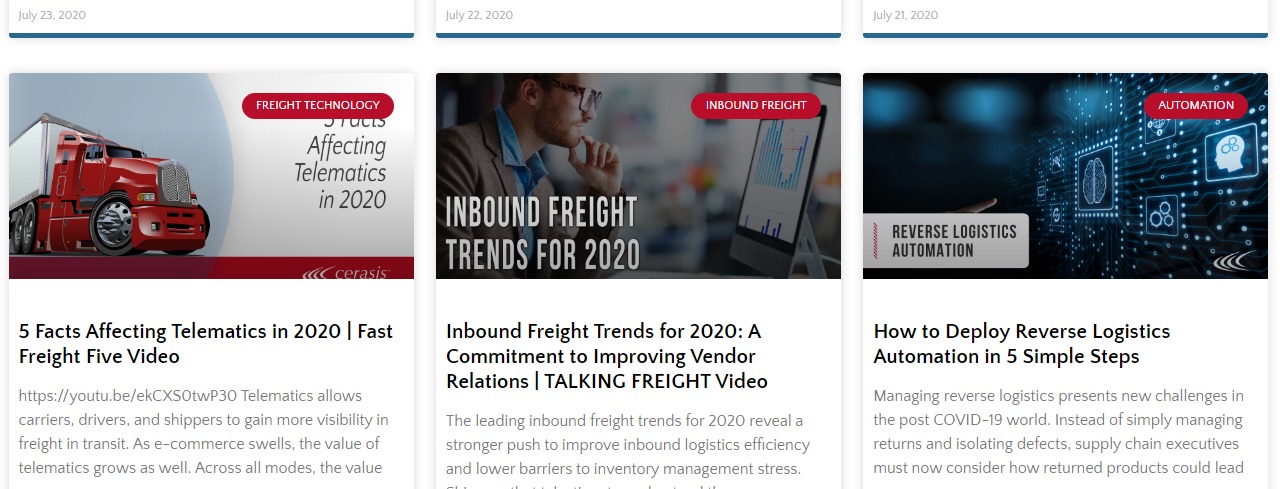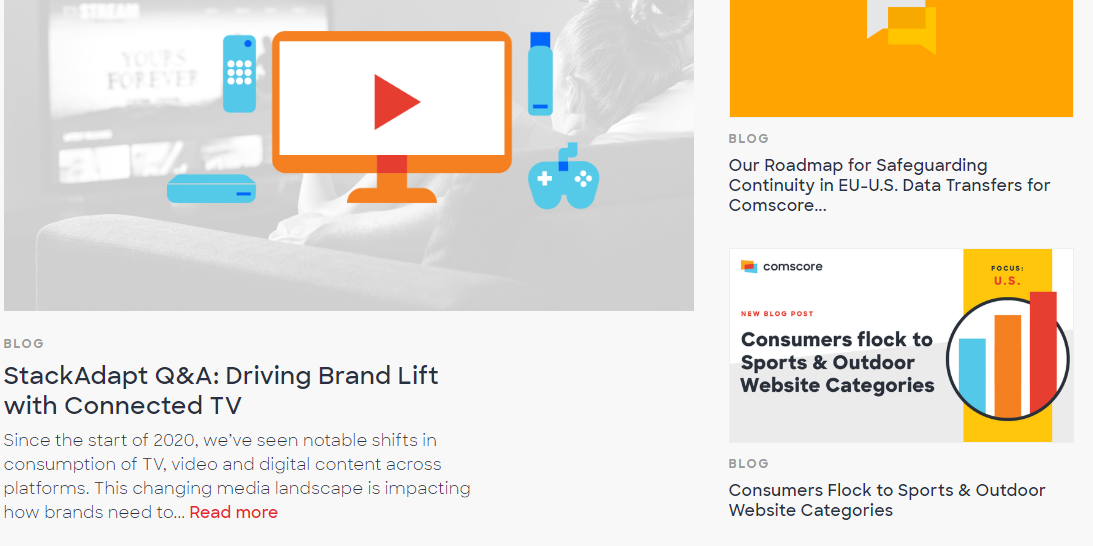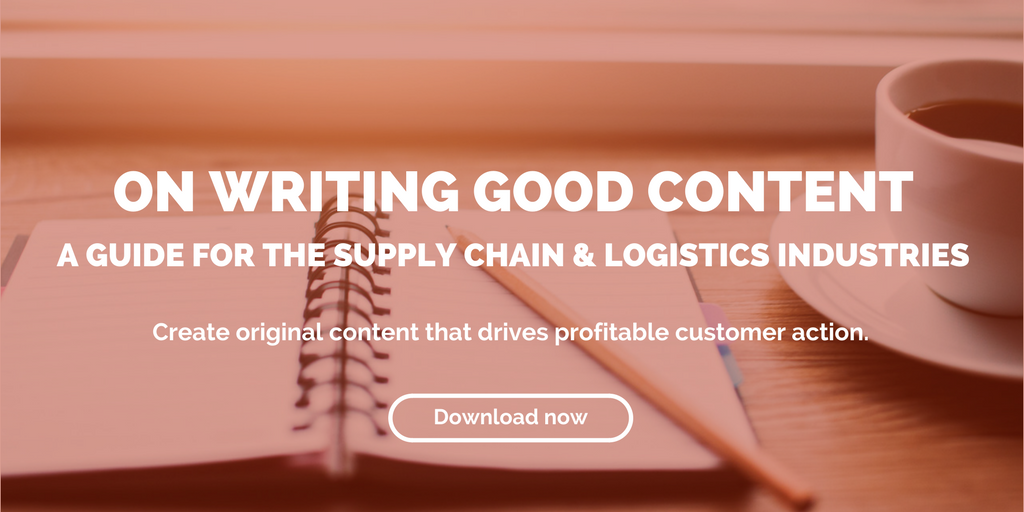
by Jennifer Hart Yim | Jan 8, 2025 | Marketing, Packaging
We’re showing you exactly how packaging companies we’re working with are using account-based marketing (ABM) to increase market share, shorten sales cycles, and win more strategic accounts. Consider this a packaging professional’s blueprint for target account success.
What is Account-Based Marketing for the Packaging Industry?
Account-based marketing is a strategic approach that focuses marketing and sales resources on specific high-value accounts rather than broad market segments. This means targeting key accounts with personalized campaigns that address their unique packaging challenges, sustainability goals, and innovation needs.
Here’s an example of what that could look like for a packaging marketer:
If consumers in Brazil begin demanding smaller milk carton sizes to reduce food waste, packaging companies might use traditional marketing to broadly promote “flexible filling solutions” to all dairy manufacturers. Instead, an aseptic packaging provider could use account-based marketing to stand out and create a highly targeted campaign for Nestlé. This campaign could specifically address Nestlé’s need to fill multiple carton sizes (500ml, 750ml, and 1000ml) for their Molico and Ninho UHT milk brands on a single production line.
Unlike traditional marketing, ABM delivers:
- 2x higher engagement rates with technical decision-makers
- 42% reduction in packaging qualification cycles
- 27% increase in contract values
- 35% improvement in customer retention
How to Build a Winning ABM Strategy
1. Define Your Ideal Customer Profile (ICP)
Success in ABM starts with identifying the perfect packaging customer. Here are some ways you can start to categorize their characteristics:
Industry Focus:
- Food and beverage manufacturers
- Pharmaceutical companies
- Consumer packaged goods (CPG)
- Industrial products
- Chemical companies
- E-commerce retailers
- Automotive suppliers
Operational Characteristics:
- Production volumes and capacity
- Geographic footprint
- Technical requirements
- Regulatory frameworks
- Sustainability commitments
Business Indicators:
- Annual packaging spend
- Growth trajectory
- Innovation appetite
- Quality standards
- Compliance needs
2. Select and Prioritize Target Accounts
Develop a tiered approach to account selection:
Tier 1: Strategic Accounts
- Major CPG companies
- Global pharmaceutical manufacturers
- Leading food and beverage brands
Tier 2: Growth Accounts
- Regional packaging buyers
- Emerging brands
- Contract manufacturers
Tier 3: Scale Accounts
- Local manufacturers
- Specialty product makers
- Start-up brands
3. Map the Packaging Decision-Making Unit
Here’s where you’ll determine who you’ll be targeting. Identify and engage with those key stakeholders. They could be part of any of the following functions:
Technical Team
- Packaging Engineers
- R&D Directors
- Quality Assurance Managers
Commercial Team
- Procurement Directors
- Supply Chain Managers
- Sustainability Officers
Executive Level
- Operations Directors
- Innovation Leaders
- C-Suite Decision Makers
Content for Account-Based Marketing for the Packaging Industry
Technical Content
Develop materials that showcase your packaging expertise:
- Barrier performance studies comparing EVOH vs. metallized films for snack packaging
- Technical specifications for child-resistant pharmaceutical blister packs
- FDA compliance guides for direct-food-contact packaging materials
- Innovation roadmaps for smart packaging with NFC technology
- Sustainability impact reports on PCR content in HDPE bottles
Commercial Content
Create content that drives packaging business decisions:
- Cost calculators comparing glass vs. PET bottles for beverage lines
- Production efficiency studies for servo-driven cartoning machines
- Risk analyses of aluminum foil supply chain disruptions
- Market trends in mono-material flexible packaging adoption
- Benchmarks of European vs. US sustainable packaging regulations
Implementing Your Packaging ABM Program
Essential Tools and Technologies
Invest in the right technology stack:
- ABM platforms for account targeting
- CRM systems for relationship management
- Marketing automation for personalization
- Analytics tools for performance tracking
- Technical collaboration platforms
Multi-Channel Engagement Strategy
Coordinate your outreach across channels:
- Technical consultations
- Innovation workshops
- Sustainability forums
- Digital demonstrations
- Industry events
- Direct mail campaigns
Measuring the Success of Account-Based Marketing for the Packaging Industry
Key Performance Indicators
Track these critical metrics:
- Account engagement scores
- Technical trial conversion rates
- Sales cycle duration
- Contract win rates
- Customer lifetime value
- Innovation adoption rates
ROI Calculation Framework
Measure your ABM investment returns:
- Cost per account engagement
- Revenue per target account
- Marketing qualified account (MQA) conversion
- Technical qualification success rates
- Long-term contract values
Common ABM Challenges (+ Solutions) Packaging Professionals Face
Challenge 1: Long Technical Qualification Cycles
Example solutions:
- Provide rapid prototyping of thermoformed packages using 3D-printed molds
- Offer accelerated shelf-life testing for new barrier materials
- Supply preliminary migration testing data for food-contact materials
- Create digital twins of packaging lines for virtual testing
Challenge 2: Multiple Stakeholder Alignment
Example solutions:
- Develop sustainability scorecards that satisfy both procurement and ESG teams
- Create ROI models that connect packaging automation with labor savings
- Build material transition roadmaps that align with corporate sustainability goals
- Provide comparative LCA (Life Cycle Assessment) data for different packaging options
Challenge 3: Complex Approval Processes
Example solutions:
- Map decision workflows
- Create milestone-based content
- Offer phased implementation plans
Top Tips for ABM Success
- Start with a pilot program focusing on 5-10 key accounts
- Invest in technical expertise and support
- Align sales and technical teams early
- Focus on sustainability and innovation
- Measure and adjust continuously
How to Get Started
- Assess your current account relationships
- Identify your top 10 target accounts
- Map stakeholders and decision processes
- Develop your technical content strategy
- Implement tracking and measurement systems
Questions We’ve Gotten from Packaging Professionals About ABM
Q: Can you give me an example of how ABM is different from traditional packaging marketing?
A: While traditional marketing might broadly promote your shrink sleeve capabilities to all beverage companies, ABM would create a targeted campaign specifically for Coca-Cola’s Southeast Asia expansion, addressing their specific need, sustainability, and localization requirements. This focused approach delivers personalized engagement at every level of their decision-making process.
Q: What budget should packaging companies allocate to ABM?
A: The most successful ABM programs are funded at about 15-25% of the total marketing budget. For example, a flexible packaging manufacturer might allocate $200,000 annually to target 10 key CPG accounts, with roughly $20,000 per account for technical content development, prototype creation, and specialized testing programs.
Q: How long does it take to see results?
A: You’ll start to see the needle move within 3-6 months. For example, you might notice increased participation in packaging innovation workshops or material qualification trials. Significant revenue impact typically occurs within 9-12 months, as seen in new packaging format adoptions or multi-year supply agreements.
Q: Which metrics matter most?
A: Focus on account engagement scores, technical qualification rates, sales cycle duration, and contract values.
Q: How can smaller packaging companies implement ABM?
A: Start with a focused program targeting 3-5 key accounts and leverage digital automation tools for efficiency and AI tools to scale.
Want to change how your packaging company targets high-value prospects and land major accounts? We’re happy to help you get started. Get in touch.
Read more:

by Fronetics | Jul 23, 2020 | Blog, Content Marketing, Covid-19, Marketing, Strategy
The benefits of a B2B blog are too important to overlook. Plus: Three companies that excel at content creation.
If your company blog has gone the way of the bears in winter, there is good reason to bring it back to life. That stale page on your website is more important than may realize. When months and even years go by without a single update, you’re missing out on company blog benefits.
Let’s cut straight to the stats:
- 70% of respondents in a Databox survey said SEO is better than pay-per-click (PPC) advertising for generating sales. (Can you guess what a leading driver of website SEO is?)
- Blogs are among the top 3 tools used in content strategies (HubSpot 2020).
- 51% of companies say updating old content has proven to be the most efficient tactic implemented (SEMrush, 2019). (See our post on reworking content for SEO here.)
- 67% of companies use organic traffic to measure content success (SEMrush, 2019). (You guessed it: A blog is a key tool in boosting organic search traffic.)
- 72% of online marketers say content creation is their most effective SEO tactic.
- Companies with blogs generate 97% more inbound links and 434% more indexed pages than those without.
In other words, a company blog brings benefits beyond just being a source of information, a tool to communicate with prospects, and to build brand. Despite new technologies, text will — as HubSpot points out in its 2020 State of Marketing Report — always be the foundation of search. And no place allows you to add descriptive text for improved search rankings as much as a company blog.
Not seeing company blog benefits? Here are 4 common pitfalls.
But as the significant number of hibernating company blogs shows, the pitfalls tend to come in spades. If your B2B blog is currently on snooze, let us guess the reason falls into one of the following categories:
- Unforeseen events: The most recent example is, of course, the Covid-19 pandemic. Faced with massive upheaval, supply chain companies, in particular, had to reshuffle resources. Although a crisis could be the time to step up communication and position the company as a leader, some blogs went dark after releasing a statement on the pandemic and its impact on the business.
- Unrealistic expectations: More than a few B2B blogs have run out of steam when immediate results fail to materialize. The disappointment tends to stem from unrealistic expectations. As much as everyone wants that first blog post to bring in a bucketload of leads, content marketing takes time to build momentum; but, done right, it is designed to turn into a tidal wave of improved search authority. Let patience rule and you will be rewarded.
- Lack of resources: To stand out in a crowd of tough competitors is not accomplished in an afternoon. Managing a successful company blog takes time. Other than outsourcing, there really is no way around it. If the blog is run on the fly or is low on the list of priorities, the results will suffer along with the motivation to keep going.
- Lack of strategy: Publishing for the sake of publishing will get you nowhere. Who are you writing for? What keywords are they using? How do you evaluate performance? Even well-written content can miss the target if it is not tailored around the audience you want to reach.
- Lackluster content: Although we always stress the need for consistency and keyword optimization when it comes to blog content, there is yet another aspect that is just as important — quality. A company blog that does not benefit your target audience will not benefit you. The most successful B2B blogs combine SEO best practices with useful, high-quality content.
B2B blogging done right: 3 examples of great blogs
For inspiration, it always helps to look at the organizations that get it right. And there are many to choose from. Take a look at three that have realized company blog benefits with engaging and purposeful content. Although conceptually different, the visions of these blogs align with the goals of each company, whether it’s generating leads with persuasive analytics or carving out a niche in social responsibility.
1. Cerasis: Market insights

The transportation management company was one of the early adopters of B2B blogging — and the results have been impressive. And Cerasis is not letting up. The company has published 15 blog posts in July alone, a pace few can — or don’t necessarily need to — match.
2. General Electric: Global vision

A multibillion-dollar corporation has the benefit of ample resources — and GE is putting them to good use. General Electric Reports intelligently humanizes the company with a stream of stories on the impact of GE products on global progress and employee spotlights that tie into current events.
3. Comscore: Analytics first

A look at Comscore’s blog leaves no doubt about its specialty: the collection and analysis of internet data. Comscore draws upon its vast resources to create content that is found nowhere else. The ability to showcase such detailed expertise is sure to sway a target audience looking to leverage customer behavior online.
Time to crawl out
The impact of an effective B2B blog can be huge. It requires research and vision to get started, persistence to keep it up, and analysis to evaluate the performance. In the end, the benefits of a company blog contribute to the health of your entire organization.
How about waking that bear up again?
Read more:
Key step to moving beyond survival mode: Revising B2B buyer personas
Trade show cancellations call for contingency plans (It’s urgent)

by Fronetics | Jul 14, 2020 | Blog, Covid-19, Marketing, SEO
Updated 1/21/25
Revitalizing Your Blog Archive: Modern SEO Strategies for 2025
Your company blog remains a valuable asset for search visibility, but the rules have evolved. Here’s how to breathe new life into your old blog posts using current SEO best practices — without overwhelming your team.
Why Update Old Content?
Search engines, particularly Google, have become increasingly sophisticated in evaluating content quality and relevance. While freshness remains important, it’s now just one factor among many. Google’s helpful content system and AI-driven algorithms prioritize comprehensive, authoritative content that genuinely serves user intent.
Our own data supports this evolution: a 2018 post about corporate social responsibility continues to perform well not just because it’s regularly updated, but because it thoroughly addresses the topic from multiple angles, matching the depth that today’s search engines expect.
The Modern Benefits of Blog Post Updates
Updating old blog posts delivers several key advantages in today’s search landscape:
- It signals to search engines that your site is actively maintained and authoritative in your field.
- It allows you to align content with current search intent patterns and semantic search capabilities.
- It helps maintain E-E-A-T (Experience, Expertise, Authoritativeness, and Trustworthiness).
- It provides opportunities to optimize for voice search and featured snippets.
- It enables you to incorporate new media formats that modern search engines favor.
Identifying High-Potential Posts for Updates
Rather than randomly updating old content, focus on posts with these characteristics:
Strong Existing Performance Signals
- Posts that already rank on page 2-3 for valuable keywords (these often have untapped potential)
- Content with high dwell time but low conversion rates
- Pages that earn consistent backlinks despite their age
- Posts that generate significant social engagement
Strategic Value Indicators
- Topics that align with current business priorities
- Content that addresses evergreen industry challenges
- Posts that target high-commercial-intent keywords
- Pages that compete with outdated competitor content
Modern SEO Update Strategies
1. Optimize for Search Intent
- Use tools like Google Search Console‘s search queries report to understand how users actually find your content
- Analyze the “People Also Ask” boxes for related topics
- Structure content to directly answer common user questions
- Consider adding FAQ schema markup for enhanced SERP visibility
2. Enhance Content Depth and Authority
- Expand sections that address key user pain points
- Include expert quotes and current industry statistics
- Add real-world examples and case studies
- Lnk to authoritative sources using targeted anchor text
3. Improve Technical SEO Elements
- Implement proper header hierarchy (H1, H2, H3)
- Optimize for Core Web Vitals (loading speed, interactivity, visual stability)
- Add structured data where appropriate (Article, HowTo, FAQ schemas)
- Ensure mobile optimization meets current standards
4. Enhance Media and Interactivity
- Add high-quality, original images with descriptive alt text
- Include interactive elements like calculators or assessment tools where relevant
- Embed relevant videos with proper schema markup
- Consider adding infographics or data visualizations
5. Internal Linking Strategy
- Create topic clusters linking related content
- Update anchor text to reflect current keyword targeting
- Remove links to outdated or redirected pages
- Add links to newer, relevant content
6. User Experience Optimization
- Break up long paragraphs for better readability
- Add table of contents for longer posts
- Include clear calls-to-action
- Optimize for featured snippet opportunities
7. Content Consolidation
- Identify and merge similar posts to create comprehensive resources
- Implement proper redirects for consolidated content
- Update internal links to point to new consolidated pages
- Maintain URL structure of the strongest performing page
Technical Implementation Best Practices to Update Old Blog Posts for SEO
When updating posts:
- Maintain the original URL to preserve link equity
- Update the “last modified” date in your CMS and XML sitemap
- Consider adding a “Last Updated” note for transparency
- Use proper schema markup to indicate the last update date
- Monitor Core Web Vitals before and after updates
Measuring Success
Track these metrics to evaluate the impact of your updates:
- Organic search traffic changes
- Featured snippet acquisition
- Position tracking for target keywords
- User engagement metrics (time on page, bounce rate)
- Conversion rates
- Core Web Vitals scores
The Bottom Line
While it’s valuable to update old blog posts for SEO, success in 2025 requires a more nuanced approach that considers user intent, content quality, and technical excellence. Focus on creating comprehensive, authoritative content that serves your audience’s needs while adhering to modern technical SEO best practices.
Regular content audits and updates should be an integral part of your SEO strategy, but remember that quality trumps quantity. Prioritize updates that add genuine value for your users and align with current search engine capabilities.
Read more:

by Fronetics | May 23, 2018 | Blog, Content Marketing, Logistics, Marketing, Strategy, Supply Chain
If you’re hoping to generate more leads on your website, you’re going to have to develop a holistic content strategy and create many strong calls-to-action.
You may have read part one of this mini-series about the importance of having a solid website if you’re going to invest in content marketing. Essentially, there’s no point in pouring a bunch of time, money, and resources into a robust content marketing program if the website that you’re driving traffic to stinks.
Be thoughtful about the role your website plays in the lead-generation process. It’s a really important piece of the puzzle that companies often overlook.
Consistently producing quality content and distributing it through various channels, like social media, will help attract your target audience to your website. But unless you provide them with a good user experience while they’re there — and give them plenty of opportunity to opt in to learn more about your business — you’re not going to move them down the sales funnel. And you’re not going to generate more leads on your website.
So how do you ensure your website is a lead-generating machine? Here’s what I know.
5 tips to generate more leads on your website
1) Create a holistic content strategy.
I can’t overstate the importance of creating a content marketing strategy, documenting it, and then designating someone to lead it if you want your content marketing to be successful. As part of that strategy, you should outline the role your website will play in assisting the conversion of leads.
Ask yourself these questions:
- Do different pages of my website suit prospects at different stages of the buyer’s journey?
- Where do I want traffic to go from each page (so prospects move further down the funnel)?
- What calls-to-action can I add to each page to assist them in that move?
- Which pages are ripe for lead conversion, and which are better for providing information?
- If you’re using the topic cluster model (which you should be!), where are my pillar pages and corresponding topic cluster pages?
Also, make sure your messaging is consistent across your website and your regularly published content (like blog posts).
2) Think about the user and how s/he experiences your site.
Hopefully in creating a holistic content strategy that includes your website, you’re thinking primarily about how the user will be interacting with your site and each page. That means organizing pages in a way that makes sense for the prospective customer, rather than internal politics.
That sounds easy, but I have helped many organizations for whom this is incredibly challenging. Often, one department (or person) feels strongly that something very important to them deserves real estate on the homepage or in the main navigation. But, if it’s not something that is meaningful to a prospective customer, you’d best not cave. Doing some usability testing with prospects is a good way to collect data to support your reasoning.
Also to consider: think about the language your buyers are comfortable with, and avoid any overly jargony or technical wording. Make sure to lay things out in a way that is approachable for them. And aim to provide the information they seek, rather than trying to sell them at every step.
3) Publish original, quality content.
Along those same lines, the best way to convince today’s B2B buyer to choose you as a vendor is to win them over with your content. Content marketing is all about positioning yourself as an expert in the industry, after all, the business that knows the most about your product/service.
Instead of promoting your business on every page, use each as an opportunity to showcase your expertise. Create resources that will help buyers better understand how to solve their pain points. And make sure everything you publish is well-written, offers value to prospects, and is completely original. You want people to want to read what you have to say.
Consider incorporating various content formats to cater to different learning preferences:
- In-depth blog posts and articles
- Infographics for visual learners
- Short video tutorials or explainers
- Podcasts for those who prefer audio content
4) Strategically place strong, visible calls-to-action.
I’ve hinted at this one already, but it bears further explanation. Make sure your website is full of calls-to-action, or buttons/links/forms that ask visitors to do something further. After all, how do you expect someone to take an action (like providing their email address) if you don’t ask them to do it?
You can generate more leads on your website by asking visitors to become leads more often.
Make sure these calls-to-action stand out on the page so that visitors’ eyes naturally go there. Be very clear about what you’re asking for and/or what the user will get in return when they complete the action. And, again, be strategic about what you’re asking people to do on which page. You won’t have much luck, for example, asking visitors to call a sales rep on a page that is designed to assist them with initial information-gathering.
Pro tip: Use A/B testing to optimize your CTAs. Try different colors, copy, and placements to see what resonates best with your audience.
5) Offer value with your calls-to-action.
Sometimes it might take a little convincing to get visitors to provide their contact information. The best way to persuade them? Give them something they want in exchange.
We call this high-value content. Examples might include:
- Case studies
- White papers/industry reports
- Webinars
- Tutorials or how-tos
- Demonstrations
- Sneak peaks or previews
- Guides or ebooks
- Podcasts
Ask visitors to download your high-value content by completing a form, which asks for their email address. Set up your marketing automation to email the content to them, then send a series of lead-nurturing emails following up at strategic intervals to keep them moving down the sales funnel.
If you want to generate more leads on your website, follow these five steps. Above all, just be thoughtful about the role your website plays in the lead-generation process. It’s a really important piece of the puzzle that companies often overlook.
Related posts:


by Fronetics | Feb 6, 2018 | Blog, Content Marketing, Logistics, Marketing, Strategy, Supply Chain
Here are three tips for creating a content strategy that will help advance your business goals.
If we’re adamant about one thing at Fronetics, it’s creating a documented content strategy. But, as a recent Harvard Business Review article suggests, many strategies fail because they are not actually strategies.
This begs the question: what constitutes a real strategy? According to Freek Vermeulen, associate professor of strategy and entrepreneurship at the London Business School, “A real strategy involves a clear set of choices that define what the firm is going to do and what it’s not going to do.” The keyword here is “clear.”
Here are three strategy-creation tips to help you create a clear content strategy that aligns with and furthers your business goals.
3 content strategy tips
1) Show your work.
Just like in high school math class, arriving at the right answer isn’t enough — you need to communicate the logic for how you got there. As you create or refine your strategy, take a step back and examine the reasoning behind each choice.
Says Sly Bailey of the UK publisher Trinity Mirror, “If there is one thing I have learned about communicating choices, it is that we always focus on what the choices are. I now realize you have to spend at least as much time on explaining the logic behind the choices.”
Understanding the reasoning behind each of your choices allows you and your team to fully believe in your strategy, and ensures you carry it out optimally.
2) Trickle down doesn’t work.
Many implementation efforts fail because executives see strategy creation as a top-down process. On this topic, Stanford Professor Robert Burgelman writes, “Successful firms are characterized by maintaining bottom-up internal experimentation and selection processes while simultaneously maintaining top-driven strategic intent.”
In other words, while you need top-down strategic direction, this will only be effective if you simultaneously empower your employees to create bottom-up initiatives that meet the strategic intent.
3) Flexibility is key.
Another source of failure for implementation efforts is the institutional unwillingness to change habits. “People are often not even aware that they are doing things in a particular way and that there might be different ways to run the same process,” says Vermeulen.
It’s important to identify and effectively work against the bad habits that hamper your strategy’s effectiveness. As Vermeulen describes in his book, Breaking Bad Habits, “There are various practices you can build into your organization to make it work.” This often involves identifying key processes, and asking, “Why are we doing it this way?” If the logic isn’t clear (see above), this process is likely a good candidate for change.
Related posts:











